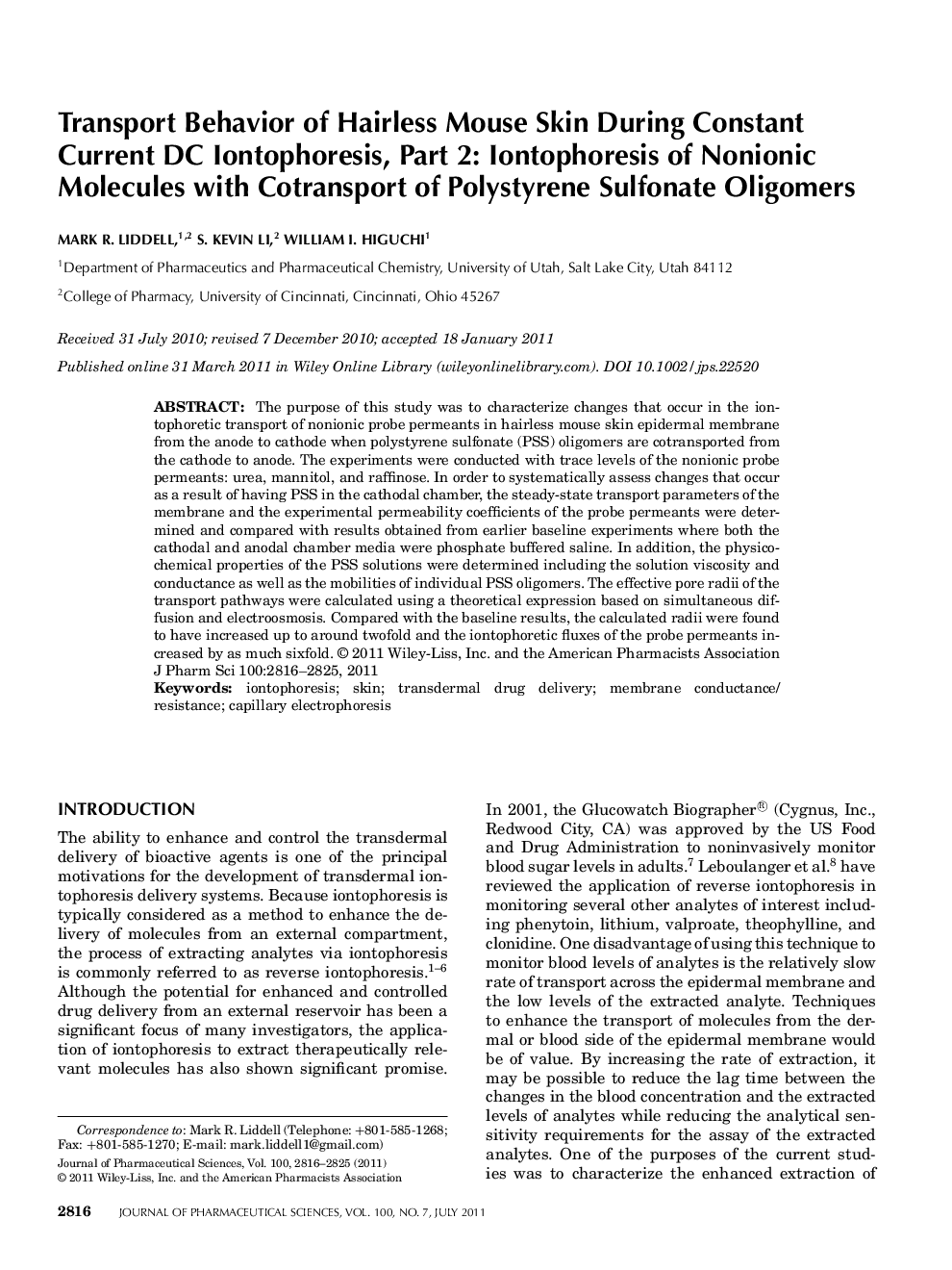| Article ID | Journal | Published Year | Pages | File Type |
|---|---|---|---|---|
| 2486631 | Journal of Pharmaceutical Sciences | 2011 | 10 Pages |
Abstract
The purpose of this study was to characterize changes that occur in the iontophoretic transport of nonionic probe permeants in hairless mouse skin epidermal membrane from the anode to cathode when polystyrene sulfonate (PSS) oligomers are cotransported from the cathode to anode. The experiments were conducted with trace levels of the nonionic probe permeants: urea, mannitol, and raffinose. In order to systematically assess changes that occur as a result of having PSS in the cathodal chamber, the steady-state transport parameters of the membrane and the experimental permeability coefficients of the probe permeants were determined and compared with results obtained from earlier baseline experiments where both the cathodal and anodal chamber media were phosphate buffered saline. In addition, the physicochemical properties of the PSS solutions were determined including the solution viscosity and conductance as well as the mobilities of individual PSS oligomers. The effective pore radii of the transport pathways were calculated using a theoretical expression based on simultaneous diffusion and electroosmosis. Compared with the baseline results, the calculated radii were found to have increased up to around twofold and the iontophoretic fluxes of the probe permeants increased by as much sixfold.
Related Topics
Health Sciences
Pharmacology, Toxicology and Pharmaceutical Science
Drug Discovery
Authors
Mark R. Liddell, S. Kevin Li, William I. Higuchi,
